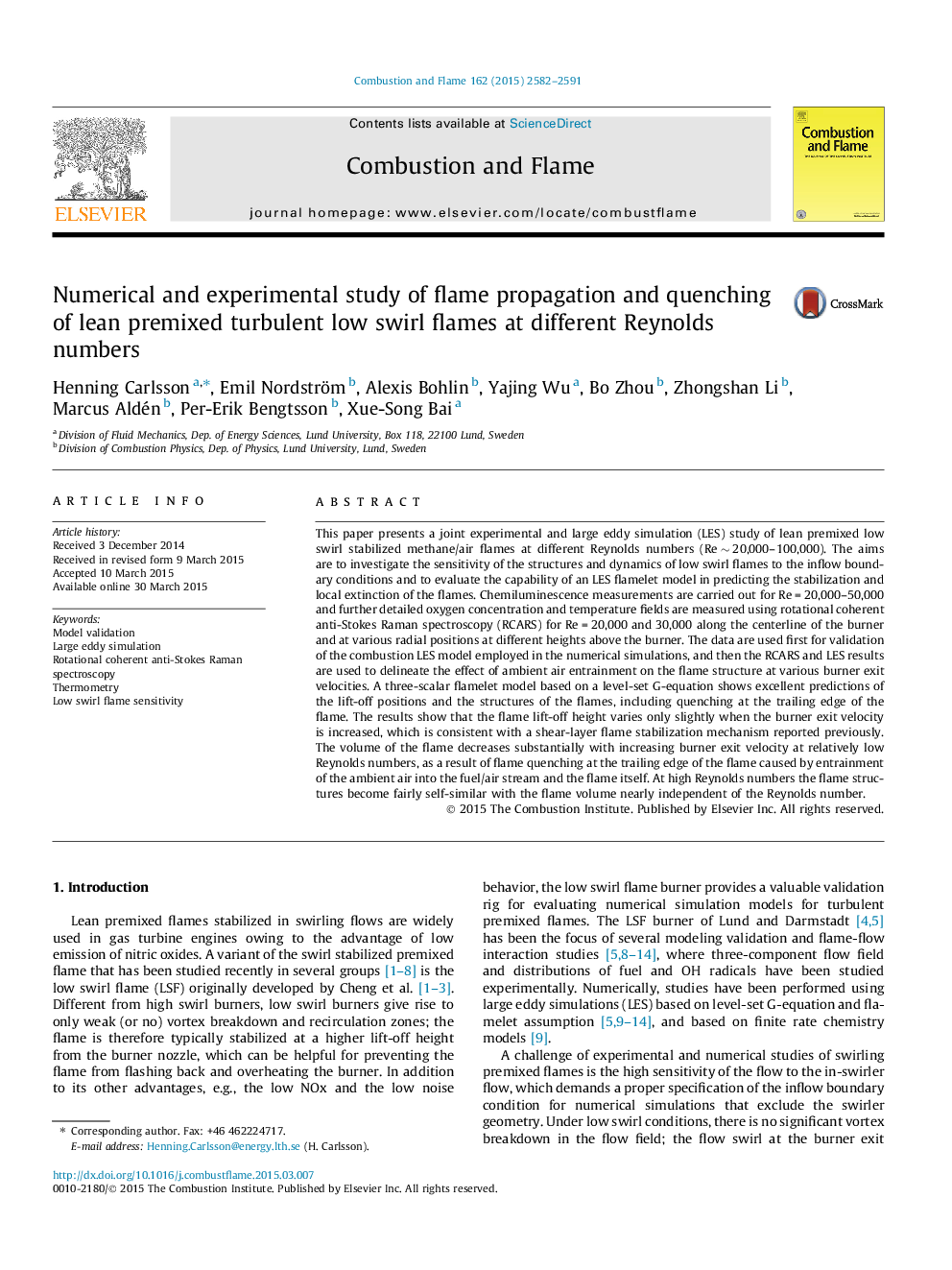| کد مقاله | کد نشریه | سال انتشار | مقاله انگلیسی | نسخه تمام متن |
|---|---|---|---|---|
| 166289 | 457751 | 2015 | 10 صفحه PDF | دانلود رایگان |
This paper presents a joint experimental and large eddy simulation (LES) study of lean premixed low swirl stabilized methane/air flames at different Reynolds numbers (Re ∼ 20,000–100,000). The aims are to investigate the sensitivity of the structures and dynamics of low swirl flames to the inflow boundary conditions and to evaluate the capability of an LES flamelet model in predicting the stabilization and local extinction of the flames. Chemiluminescence measurements are carried out for Re = 20,000–50,000 and further detailed oxygen concentration and temperature fields are measured using rotational coherent anti-Stokes Raman spectroscopy (RCARS) for Re = 20,000 and 30,000 along the centerline of the burner and at various radial positions at different heights above the burner. The data are used first for validation of the combustion LES model employed in the numerical simulations, and then the RCARS and LES results are used to delineate the effect of ambient air entrainment on the flame structure at various burner exit velocities. A three-scalar flamelet model based on a level-set G-equation shows excellent predictions of the lift-off positions and the structures of the flames, including quenching at the trailing edge of the flame. The results show that the flame lift-off height varies only slightly when the burner exit velocity is increased, which is consistent with a shear-layer flame stabilization mechanism reported previously. The volume of the flame decreases substantially with increasing burner exit velocity at relatively low Reynolds numbers, as a result of flame quenching at the trailing edge of the flame caused by entrainment of the ambient air into the fuel/air stream and the flame itself. At high Reynolds numbers the flame structures become fairly self-similar with the flame volume nearly independent of the Reynolds number.
Journal: Combustion and Flame - Volume 162, Issue 6, June 2015, Pages 2582–2591
